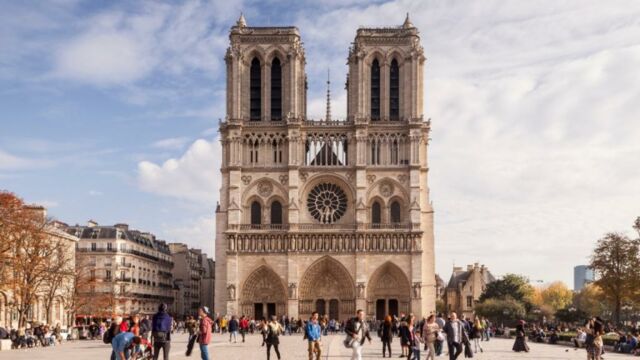Recently, a sarcophagus was uncovered in the basement of the Notre-Dame Cathedral and the discovery is being hailed as a miracle. Without the devastating fire, which broke out three years ago, and the gigantic reconstruction work that followed, this leaden coffin would have never been found.
Discover our latest podcast
Remains of a high-ranking canon
The archaeologists who were able to take a first look at the sarcophagus deduced that it dated from the 14th century. The coffin takes the shape of a person, the one that it sheltered, and given that it was found in the cathedral, it mostly likely contained the remains of a high-ranking church official, also known as a canon.
After a few punctures into the coffin, the team was able to insert a micro-camera which allowed them to gather the most unbelievable data. Archaeologist Christophe Besnier told Le Monde:
We were able to identify remains of tissue, organic matter such as hair, and remains of plants especially at the head, a priori it looks like boxwood, a practice reserved for a social elite. The fact that these remains are still there presages an excellent conservation of its contents. Of the deceased as well as his clothes and objects associated with him.
Read more:
⋙ Funnel cloud: A spectacular tornado leaves villagers in shock in France
⋙ These are the 12 most gorgeous beaches in France
Will the discovery delay the reconstruction of Notre-Dame?
When the fire first broke out, French President Emmanuel Macron said that the Notre-Dame would be rebuilt within five years. Three years have already passed and archaeologists have now realised they’ve stumbled upon a goldmine. Chief architect Philippe Villeneuve told Le Monde that while he is happy about the discoveries, he needs to get things going according to schedule. He said in conversation with Le Monde:
The archaeologists have found more than we expected, and I'm happy about that. But I am in charge of bringing this work to a conclusion. I am concerned about the schedules that I must respect. Above all, there will be 600 tons of scaffolding at this location. I need a stable and flat ground, that's my priority.
This is not the only discovery that has dazzled archaeologists. In fact, several metres below the ground, a geophysical study has uncovered the remains of an ancient defensive wall of the Roman Empire. Incredible!
This article has been translated from Gentside FR.















